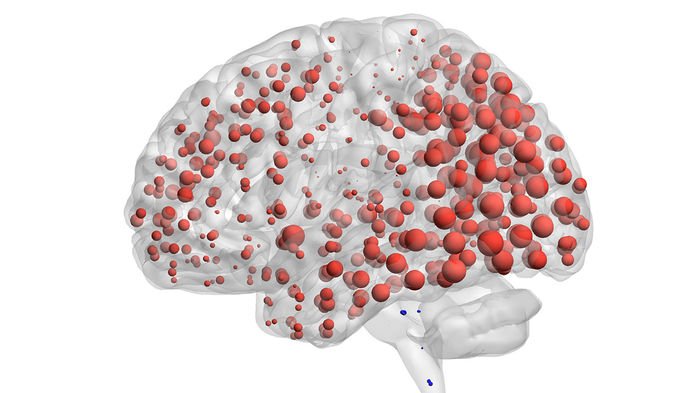Out of the blue, researchers have delivered prove in living people that the protein tau, which defaces the mind in Alzheimer's illness, spreads from neuron to neuron. Albeit such development wasn't specifically watched, the finding may light up how neurodegeneration happens in the overwhelming sickness, and it could give new plans to stemming the cerebrum harm that ransacks such a large number of memory and perception.
Tau is one of two proteins—alongside β-amyloid—that shape abnormal clusters in the brains of individuals with Alzheimer's sickness. Researchers have since a long time ago discussed which is most critical to the condition and, therefore, the best focus for mediation. Tau stores are found inside neurons, where they are thought to hinder or execute them, while β-amyloid structures plaques outside mind cells.
Specialists at the University of Cambridge in the United Kingdom joined two cerebrum imaging systems, utilitarian attractive reverberation imaging and positron emanation tomography (PET) checking, in 17 Alzheimer's patients to outline the development of tau and their brains' useful network—that is, the means by which spatially isolated mind districts speak with each other. Strikingly, they found the biggest convergences of the harming tau protein in cerebrum locales vigorously wired to others, proposing that tau may spread in a route undifferentiated from flu amid a scourge, when individuals with the most social contacts will be at most serious danger of contracting the malady.
The exploration group says this example, depicted yesterday in Brain, bolsters something known as the "transneuronal spread" theory for Alzheimer's malady, which had beforehand been exhibited in mice however not individuals. "We descend emphatically for the possibility that tau is beginning in one place and moving crosswise over neurons and neurotransmitters to different spots," says clinical neurologist Thomas Cope, one of the examination's creators. "That has at no other time been appeared in people. That is exceptionally energizing." Because the analysts took a gander at Alzheimer's patients with a scope of infection seriousness, they were likewise ready to exhibit that, when tau amassing was higher, cerebrum areas were in general less associated. The quality of associations likewise diminished, and associations were progressively arbitrary.
Nathan Spreng, a neuroscientist who considers cerebrum systems and Alzheimer's malady at the Montreal Neurological Institute and Hospital in Canada, calls the proof for an infectionlike spread of tau "captivating and convincing." But others take note of that the investigation did not take after patients crosswise over time, a major shortcoming that makes it hard to reason that "tau spreading" caused the diminished useful availability, says Jorge Sepulcre of Harvard Medical School in Boston, who utilizes PET checking to test the effects of neurodegenerative illnesses on mind arrange network. "The examination's decisions ought to be taken carefully as they do exclude longitudinal verification or approval about the spreading idea of tau," he says.
However the worldwide picture of weakening in the investigation makes it profitable, Spreng says. "While creature work has taken a gander at how [tau] spread occurs from neural connection to neurotransmitter, this investigation indicates pleasantly what the cerebrum wide impacts are as the systems begin with regards to dynamic Alzheimer's malady." He notes, be that as it may, that the little example measure is a worry.

In spite of the fact that he's sure his group has effectively exhibited the transneuronal spread of tau, Cope says that the Cambridge bunch is currently following bigger quantities of subjects with Alzheimer's and following people crosswise over time with cerebrum imaging. The spread of tau could have suggestions for clinical care, he includes, if medications can be produced that assault tau in neural connections, outside of cells, locking it up inside influenced cells ahead of schedule, before it can spread.